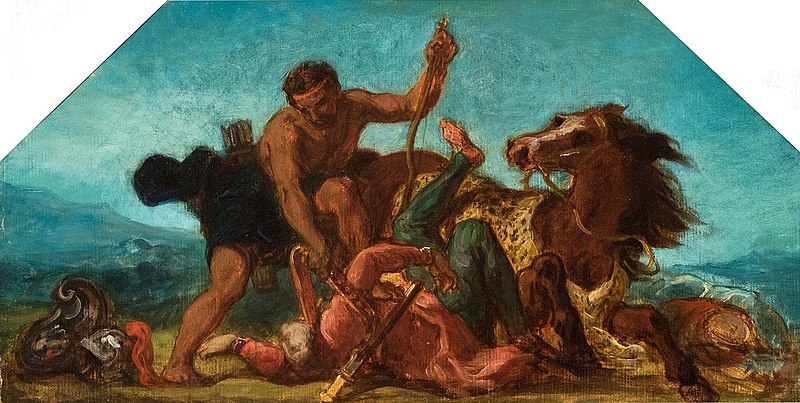In Greek mythology, the Amazons were a fascinating people: daughters of Ares who formed a warrior society centered on women. While the Amazons have always fascinated me, one in particular stands out: Hippolyta. Hippolyta, also known as Hippolyte, was the Amazon queen who appears extensively in Heracles and Theseus myths. Let’s explore the life and story of Hippolyta and the famous war belt of Ares, that she wore with pride.
Hippolyta Key Facts
| Parents | Ares and Otrera |
| Partners | Theseus |
| Siblings | Antiope and Melanippe |
| Offspring | Hippolytus |
| Other names | Hippolyte |
| Roman name | Hippolyta |
| Best Known Myth | Her girdle and the 12 Labors of Hercules |
Name and Etymology
Hippolyta, a name that resonates with strength and leadership, has its roots deeply embedded in ancient Greek culture. The name itself can be broken down into “hippos,” meaning horse, and “lytós,” signifying unbridled or set free. This combination beautifully encapsulates the essence of the Amazonian queen: a free spirit, unyielding and untamed. The Romans, always keen to adapt and incorporate Greek myths, referred to her simply as Hippolyta.
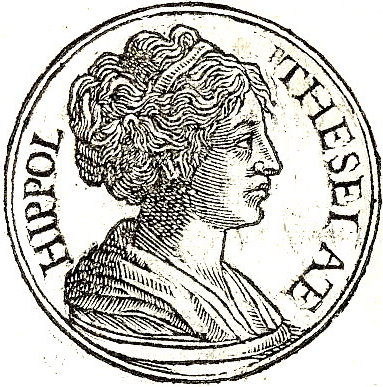
Hippolyta’s Family and Relationships
Born to Ares, the god of war, and Otrera, the founder of the Amazonian tribe, Hippolyta was destined for greatness from the very beginning. Her lineage, steeped in power and valor, set the stage for her own legendary journey. As a child, she grew up alongside her sisters, Antiope and Melanippe, in the warrior society of the Amazons, where she quickly showcased her prowess and leadership.
Hippolyta’s romantic entanglements are as captivating as her battles. Her most notable relationship was with Theseus, the king of Athens. Their union bore a son, Hippolytus, whose own narrative intertwines with the tragic tale of his parents. The story of Hippolyta and Theseus is a blend of love, adventure, and misfortune, reflecting the often tumultuous nature of romantic alliances in the mythic landscape of ancient Greece.
Beyond her relationship with Theseus, the details surrounding other lovers are not as well-documented in the primary sources of Greek mythology.
Myths about Hippolyta
The myths surrounding Hippolyta are a testament to her valor, leadership, and the complex interplay of love and destiny. Each tale not only unveils a different facet of her character but also her interactions with other legendary figures of Greek mythology.
Hippolyta and Theseus
The narrative intertwining Hippolyta and Theseus unfolds through romance, adventure, and tragedy. During one of his adventures, the heroic king of Athens, Theseus, becomes enchanted by Hippolyta’s beauty and strength. Consequently, he abducts her, and she later bears him a son, Hippolytus. However, their union is fleeting. Misunderstandings, coupled with external influences such as the schemes of jealous gods and rivals, tragically drive them apart. The tale reflects the often tumultuous nature of love and alliances in the mythic landscape of ancient Greece.
The Quest for the Girdle
One of the most renowned myths centers around Hippolyta’s girdle, symbolizing her authority as the queen of the Amazons. This tale seamlessly intertwines with the Twelve Labors of Hercules, a series of penances and tasks the hero undertook. Specifically, the ninth labor tasked Hercules with obtaining Hippolyta’s girdle at the behest of Eurystheus’ daughter.
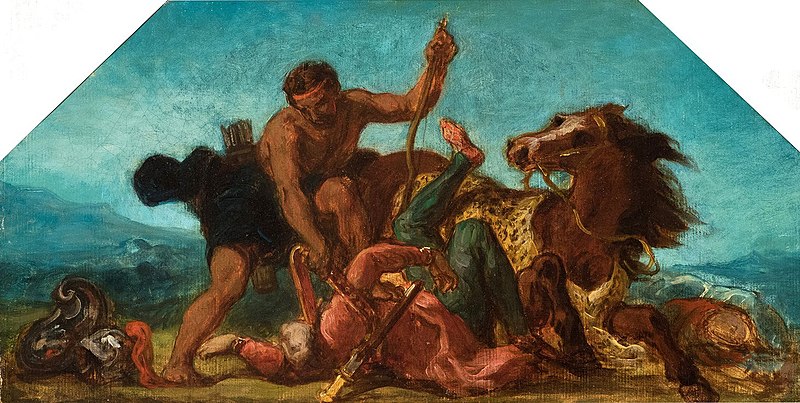
Upon reaching the shores of Themiscyra, the homeland of the Amazons, Hercules received a warm welcome from Hippolyta, who admired his valor. Impressed, she was willing to part with her girdle, recognizing the divine nature of his quest. However, the scenario took a dark turn when Hera, with her mischievous intervention, spread a rumor among the Amazons that Hercules intended to abduct their queen. This rumor ignited a fierce battle. Amid the ensuing chaos, a tragic event unfolded as Hippolyta was killed. Despite the tragedy, Hercules managed to obtain the girdle, thus completing his task. Yet, his success left a trail of sorrow in its wake.
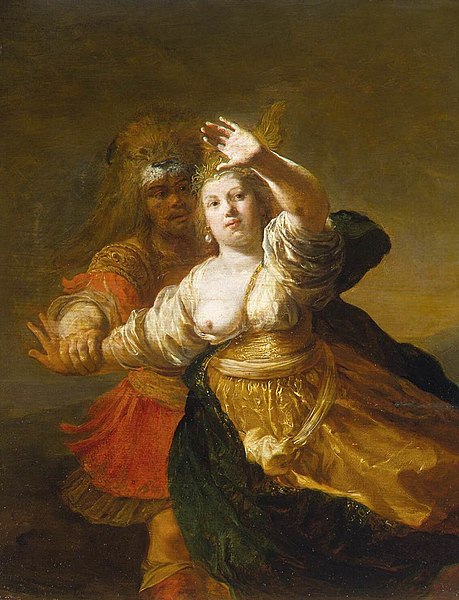
Depiction And Characteristics
Hippolyta embodies the essence of a warrior queen in her depictions. Sporting a tall, athletic build and a regal demeanor, she often stands with her girdle, a symbol of her authority. Beyond her physical prowess, her character shines through her bravery, wisdom, and a strong sense of justice. As a leader, her subjects revere and respect her, and she guides the Amazons with a firm yet compassionate hand. Moreover, animals like the horse, symbolizing freedom and strength, frequently associate with her, echoing her own untamed spirit.
Representations Of Hippolyta In Art
Throughout history, Hippolyta’s strength and grace have captivated artists. Transitioning from the intricate pottery designs in ancient Greece to the grand paintings of the Renaissance, her image has found immortalization time and again. One notable artwork notably depicts her intense battle with Hercules, showcasing the clash of two titanic forces. Additionally, another portrays her tender moments with Theseus, capturing the duality of her character: a warrior and a lover.
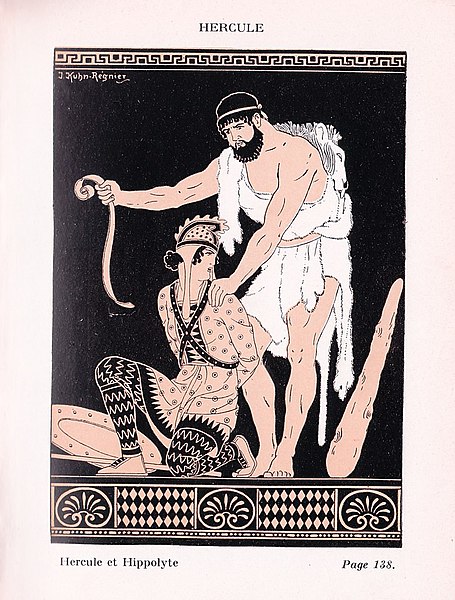
Mentions in Ancient Texts
Hippolyta’s tales have found their way into numerous ancient texts, each offering a unique perspective on her life and adventures.
Homer’s Iliad
Penned around 762 B.C. by the legendary Homer, a figure revered as the greatest ancient Greek epic poet, the Iliad is a monumental work that chronicles the events of the Trojan War. In this epic, Hippolyta’s girdle is mentioned as a gift from Ares, her father. The text provides a glimpse into the reverence with which the girdle, and by extension, Hippolyta, was viewed.
“A golden girdle, a gift from Ares, symbol of a warrior’s honor.”
Virgil’s Aeneid
Written by Virgil, a prominent ancient Roman poet, around 29 to 19 BC, the Aeneid is an epic poem that explores the journey of Aeneas, a Trojan hero and the ancestor of Romulus and Remus. In this magnum opus, Virgil touches upon Hippolyta’s interactions with the heroes of the Trojan War, weaving her narrative into the larger tapestry of the epic.
“Amidst the chaos of war, even the mighty Hippolyta’s fate was intertwined with Troy’s heroes.”
Sophocles’ Trachiniae
Sophocles, one of the three ancient Greek tragedians whose plays have survived into modern times, wrote Trachiniae around 430 B.C. This tragic play delves into the life and struggles of Deianeira, the wife of Heracles. Although not a central figure, Hippolyta’s presence is felt as her girdle becomes a symbol of desire and conflict.
“A girdle won from a queen of strength, a token of love, yet a harbinger of doom.”
Ovid’s Heroides
Composed by Ovid, a notable Roman poet who lived during the reign of Augustus, Heroides is a collection of fictional letters penned around 25 BC. In this work, Ovid imagines the letters exchanged between legendary lovers, including Hippolyta and Theseus.
“In words unspoken, our hearts entwined, yet fate, a cruel mistress, drives us apart.”
Frequently Asked Questions
Hippolyta was the daughter of Ares, the god of war, and Otrera, the founder of the Amazons.
Yes, she had two sisters, Antiope and Melanippe.
Her most renowned tale revolves around her girdle and Hercules’ quest to obtain it.
Theseus, the king of Athens, was her most significant romantic interest.
Featured Image Credit: Eugene Delacroix, Public domain, via Wikimedia Commons

